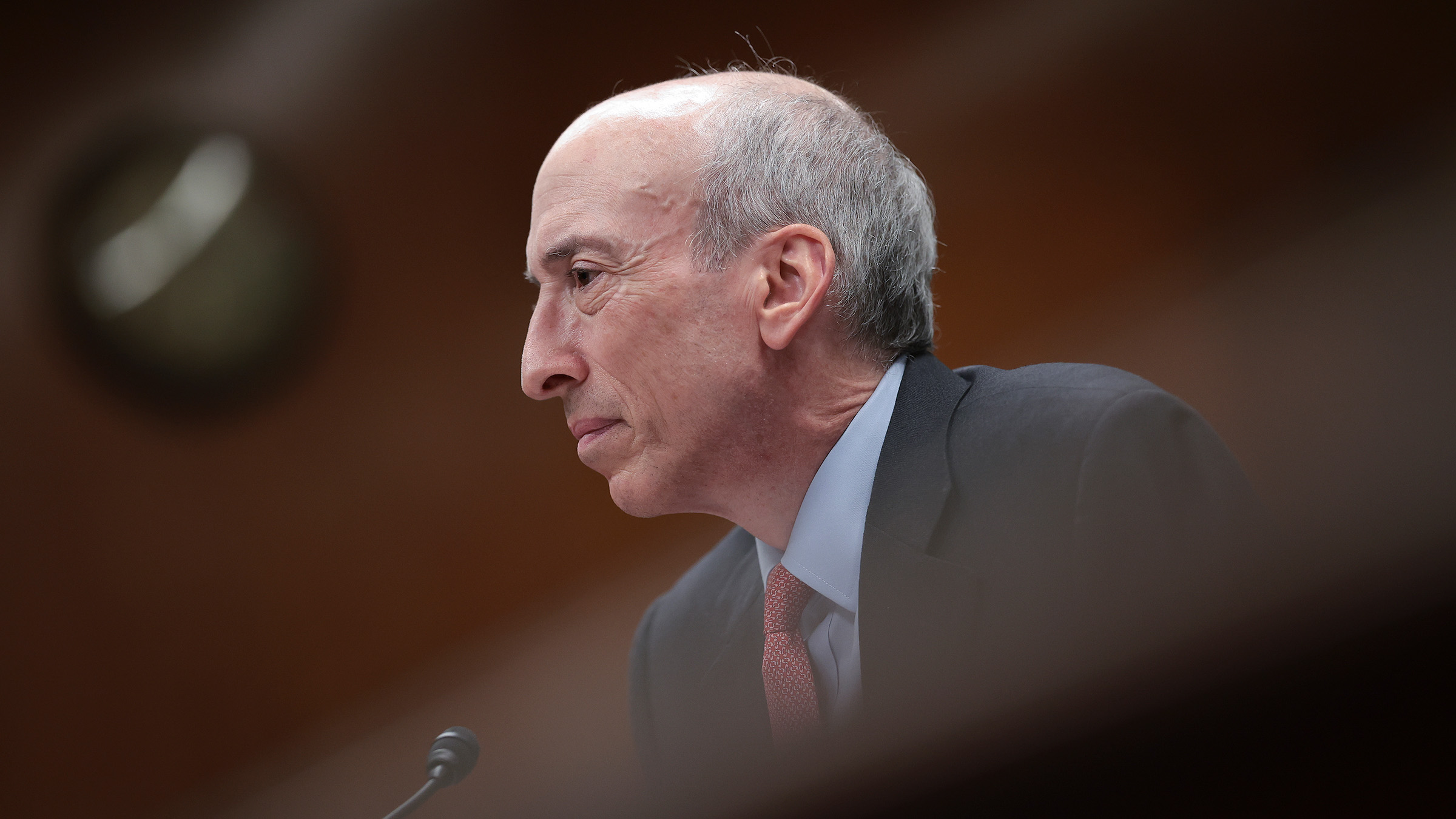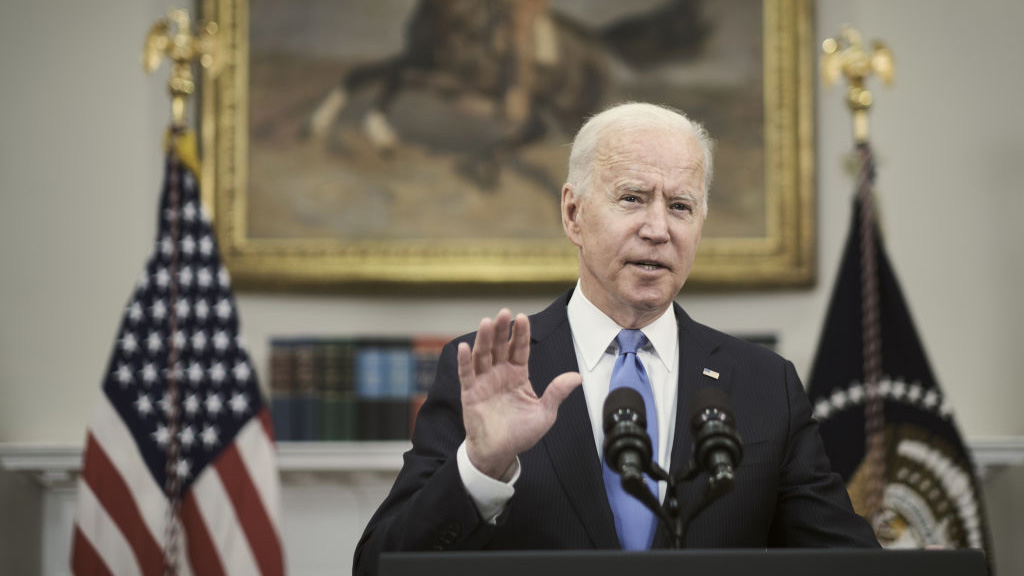House passes COVID stimulus package with billions in technology funding
Schools and libraries win $7.1 billion in connectivity funding


Congressional lawmakers passed the long-awaited government stimulus bill Wednesday, which included cash injections for federal technology efforts.
The House of Representatives passed the American Rescue Plan Act, a $1.9 trillion package designed to help US households hit by the pandemic. It included $7.1 billion in emergency connectivity funding for remote learning and $1 billion for the Technology Modernization Fund (TMF), a funding hub for federal IT projects.
The broadband money came in the form of the Emergency Connectivity Fund (ECF), which would allocate money for schools and libraries to buy Wi-Fi hotspots, modems, routers, and connected devices for students to use for remote learning during the pandemic. The Fund resulted from pressure from education advocates who petitioned the Federal Communications Commission (FCC) in January for emergency E-rate funding.
The ECF is a separate measure to the Emergency Broadband Benefit Program passed as part of the Consolidated Appropriations Act in December.
FCC chair Jessica Rosenworcel, a long-standing supporter of broadband assistance for students, praised the move. "Recent estimates suggest the Homework Gap may affect as many as 17 million kids with recent data suggesting as many as one in three Black, Latinx, and American Indian/Alaska Native students lack high-speed internet access at home," she said. "The Emergency Connectivity Fund could make a major difference in our ability to help these families and students."
The government also made broadband internet access part of the Homeowner Assistance Fund, which allocates $9.96 billion to help homeowners cope with the pandemic. Municipalities could also use money from the $130.2 billion Coronavirus Local Fiscal Recovery Fund for broadband investments, the Act said. States could make broadband investments via the $219.8 billion Coronavirus State Fiscal Recovery Fund.
RELATED RESOURCE

The TMF is a funding service passed by the Modernizing Government Technology Act of 2017. Overseen by a Technology Modernization Board comprising IT leaders, it reviews technology projects submitted by federal agencies and grants funding as appropriate. The $1 billion for the TMF was a substantial downgrade from the original $9 billion President Biden first proposed in his stimulus plan on January 20.
Sign up today and you will receive a free copy of our Future Focus 2025 report - the leading guidance on AI, cybersecurity and other IT challenges as per 700+ senior executives
Biden's plan earmarked the TMF money to help fund shared services at the Cybersecurity and Information Security Agency (CISA) and the General Services Administration, along with other federal IT projects. Biden also called on Congress to change the TMF's reimbursement structure to fund more innovative projects in his January announcement.
The Act also carved out a separate $650 million for the Cybersecurity and Infrastructure Security Agency and $200 million for the United States Digital Service. The National Institute of Standards and Technology (NIST) got $150 million, while the National Science Foundation received $600 million in funding. It now goes to Biden's desk to sign. The White House announced that he would sign the Act into law today — a day earlier than expected.
Danny Bradbury has been a print journalist specialising in technology since 1989 and a freelance writer since 1994. He has written for national publications on both sides of the Atlantic and has won awards for his investigative cybersecurity journalism work and his arts and culture writing.
Danny writes about many different technology issues for audiences ranging from consumers through to software developers and CIOs. He also ghostwrites articles for many C-suite business executives in the technology sector and has worked as a presenter for multiple webinars and podcasts.
-
 UK’s ‘Tech Prosperity Deal' with US hits rocky ground
UK’s ‘Tech Prosperity Deal' with US hits rocky groundNews The US has reportedly threatened to pull out of the deal over the Digital Services Tax and broader economic disagreements
-
 ‘The UK must position itself as the destination of choice’ in wake of H-1B visa crackdown, tech policy group says
‘The UK must position itself as the destination of choice’ in wake of H-1B visa crackdown, tech policy group saysNews The UK has a massive opportunity to capitalize on the US government’s H-1B visa changes
-
 IDC warns US tariffs will impact tech sector spending
IDC warns US tariffs will impact tech sector spendingNews IDC has warned that the US government's sweeping tariffs could cut global IT spending in half over the next six months.
-
 US government urged to overhaul outdated technology
US government urged to overhaul outdated technologyNews A review from the US Government Accountability Office (GAO) has found legacy technology and outdated IT systems are negatively impacting efficiency.
-
 US proposes new ‘know-your-customer’ restrictions on cloud providers
US proposes new ‘know-your-customer’ restrictions on cloud providersNews The US aims to stifle Chinese AI competition with new restrictions on cloud providers to verify foreign data center users
-
 SEC passes rules compelling US public companies to report data breaches within four days
SEC passes rules compelling US public companies to report data breaches within four daysNews Foreign entities trading publicly in the US will also be held to comparative standards
-
 US says National Cybersecurity Strategy will focus on market resilience and private partnerships
US says National Cybersecurity Strategy will focus on market resilience and private partnershipsNews The recently announced implementation plans alow for more aggressive action against ransomware gangs
-
 US ‘Tech Hubs’ drive aims to boost innovation in American heartlands
US ‘Tech Hubs’ drive aims to boost innovation in American heartlandsNews The development of the hubs will could help drive regional innovation and support for tech companies


